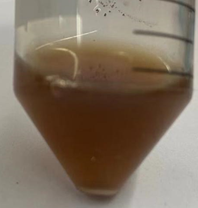Part:BBa_K3628018
T7 promoter-RBS-HpaBSMS-RBS-HpaCSMS
Description
This is a composite part which expresses HpaBC, which can convert tyrosine into levodopa by consuming NADH. In the experiment, this part is composed of HpaB SMS and HpaC SMS.HpaBC can therefore convert tyrosine into levodopa.
Usage and Biology
Experiments & Results
1、Test HpaBC yielding efficiency
To examine the efficiency of HpaBC-SMS, we transform pHpaBC-SMS into a DH10b strain which is integrated with T7RNAP constitutive expression unit,which confirm the practicability of our fermentation system.
Experimental setup
- we first prepare DH10b[1], a strain that is integrated with T7RNAP constitutive expression unit, as component cell.
- Then we transform HpaBC-WT and HpaBC-SMS to component cells, respectively.
- The monoclonals are later overnight cultivated, and is then inoculated into fresh LB medium with a proportion of 1:200.
- The samples are then cultivated for 48h, in 37℃, 220rpm. Samples are taken out, after the 48-hours-long cultivation, to measure for its L-dopa concentration.
- The detailed description of measurement is illustrated below
Results
We culture our strains overnight and find medium turning dark.
To explore the best substrate concentration for L-Dopa production, In this test, leveled concentrations of the substrate, tyrosine, (0mM, 0.03mM, 0.3mM, 1.5mM, 3mM, 4.5mM, 6mM, 9mM) are prepared. We then inoculate Bacteria in 7 mL LB medium and take for 500μL each time. They are taken at specific points: 30h, 39h, 42h, 50h. We use microplate reader to measure its absorbance under OD 400, and we determined the production of L-Dopa with standard curve of levodopa.
The results are listed below.
The following column is about levodopa concentration in 3mM samples cultured for 42h.
We can observe from the graph that, after codon optimization, HpaBC has presented higher biological activity. In the cultivation where the concentration of tyrosine is 3mM, after 42 hours of cultivation, the production of levodopa in HpaBC-WT is 0.88 mol/L; in the cultivation of HpaBC-SMS, the production is 1.12 mol/L. We thus chose HpaBC-SMS for the following experiments.
2、Yielding Levodopa under light regulation
We combine the light regulation system and HpaBC, to determine whether HpaBC yielding can be controlled under light regulation.
Experimental setup
- In this experiment, we transform pHpaBC-SMS and plasmids which contain photoswitches simultaneously into DH5α. We culture the strain overnight to get bacteria culture.
- The monoclonals are later overnight cultivated, and is then inoculated into fresh LB medium with a proportion of 1:200.
- Samples are taken for 1mL each time at several points: 8h, 16h, 24h, 28h, 32h, 44h.
- We applied a levodopa measurement for each sample.
Results
[[Part:BBa_K3628024|J23106-RBS-T7 RNA polymerase N 1~564-Vvd-RBS-Vvd-T7 RNA polymerase C 565~883] and [[Part:BBa_K3628023|J23106-RBS-T7 RNA polymerase N 1~179-pMagFast2-RBS-nMagHigh1-T7 RNA polymerase C 180~883] are efficient and picked. In the following graph, we illustrate the yielding condition of the two photoswitches under different culture conditions.
In this graph, we can see our engineered E. coli produce levodopa at a relatively high rate in the Light group, but lower in the Dark group.
| None |





